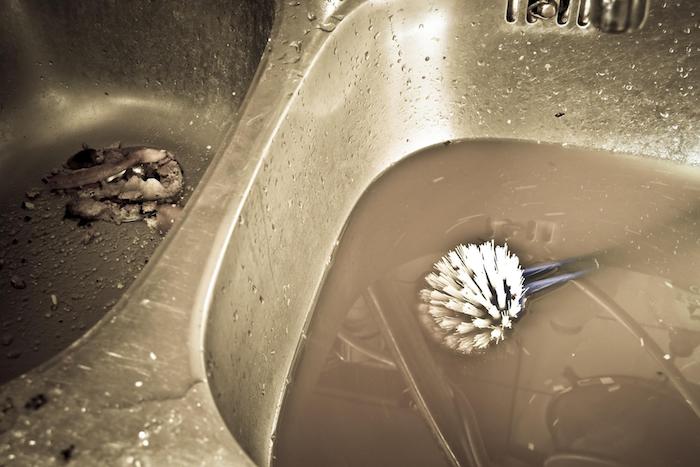Just how do you actually feel about How to Fix a Slow Draining Sink?

Introduction
We've all existed: You're cleaning your teeth or cleaning your hands, and you notice the water pooling in the sink. Instead of rapidly swirling down the tubes, it remains, turning your once-refreshing morning routine into a mini swamp scene. A slow-draining sink isn't just aggravating; it's usually an indicator of larger plumbing problems lurking under the surface area. The good news is that most slow-draining sinks can be repaired with a little knowledge, a few standard devices, and some perseverance. Prepared to tackle this task head-on? Let's roll up our sleeves and dive right in.
Recognizing the Sources Of a Slow-Draining Sink
Before you start poking around in your pipes, it aids to know what could be triggering the stagnation. Comprehending the root cause makes it less complicated to select the appropriate repair.
Devices and Materials You'll Require
The right devices make all the difference. The good news is, you won't require a totally stocked plumbing professional's van to get the job done.
Step-by-Step Guide to Fixing a Slow-Draining Sink
Now, allow's get involved in the nitty-gritty. This step-by-step process will guide you with basic strategies to recover your sink's drain.
Step 1: Eliminate and Clean the Stopper
Typically, the stopper (that little plug you lower to block water) is the initial culprit. Remove it carefully and wipe any type of hair or substance trapped around its base. Rinse it extensively before putting it back in position.
Step 2: Make Use Of a Plunger to Dislodge Particles
Got that plunger prepared? Placement it over the drainpipe and provide it a couple of firm pumps. The idea is to develop suction that can loosen any clog. If you see little bits of debris drifting up, you're on the right track.
Action 3: Try a Drainpipe Snake or Cord Wall Mount
If the plunger does not do the trick, it's time to highlight the drain serpent. Gently feed it right into the drain and spin as you go. You might feel some resistance-- that's most likely the clog. Maintain turning and drawing up until you eliminate the blockage. If you do not have a drainpipe snake, a straightened out cord wall mount can operate in a pinch.
Tip 4: Apply a Do It Yourself Drainpipe Cleanser
A natural cleaner made from cooking soft drink and vinegar can break down residual gunk. Pour half a cup of baking soft drink right into the drainpipe, adhered to by half a mug of vinegar. Let it fizz for about 15 mins, then flush with hot water. This chain reaction often does marvels for minor clogs.
Tip 5: Rebuild and Examine the Sink
Put everything back with each other and run the faucet. Does the water now swirl away at a decent speed? If yes, give yourself a pat on the back. Otherwise, don't misery-- there are still a couple of more dress up your sleeve.
Necessary Tools for Do It Yourself Services
A bettor is your go-to beginning point. A tiny, sink-sized plunger creates suction that can remove minor clogs. For even more consistent clogs, a drain snake (in some cases called a plumber's auger) functions marvels. A pair of gloves, a flashlight, and possibly a set of protective goggles are additionally handy.
Suggested Cleansing Solutions
Light dish soap and hot water can assist break down greasy accumulation. A combination of baking soda and vinegar is a tried and true natural remedy, and chemical cleansers provide an even more green approach. Keep chemical drain cleansers as a last resort, as they can be severe on your pipelines.
Typical Perpetrators Behind Slow Drain
So, what's blocking things up? Usually, it's a mix of everyday debris-- think hair, soap residue, tooth paste residue, and remaining food bits. Over time, these tiny bits gather and hold on to the pipe wall surfaces, slowly tightening the flow and making it harder for water to pass through. Sometimes, natural resource from hard water can additionally contribute to the crud, creating the perfect tornado for stubborn obstructions.
When is it Time to Take Action?
If you discover the water draining pipes slower than common, it's an excellent concept to interfere earlier rather than later. Waiting too long could result in complete blockages, unpleasant odors, or even pipe damage. If the water takes greater than a few seconds to clear out after turning off the faucet, consider it a warning and prepare yourself to put on your do it yourself hat.
Safety And Security First: Preventative Measures and Preparations
Prior to you launch into unclogging setting, consider safety and security. You're handling possibly filthy water and debris, so slip on a set of gloves. If you're making use of chemical cleaners, ensure the room is well-ventilated and comply with the directions on the label.
Protective Equipment and Work Space Setup
Lay down some old towels or dustcloths around the sink location to catch splashes. Clear away any kind of products that could enter your method, like soap dispensers or toothbrush owners. Make certain you have good lights-- get hold of a flashlight if required.
Alternative Approaches for Stubborn Clogs
Not all blockages are created equivalent. If your sink still refuses to comply, think about these different options.
Sodium Bicarbonate and Vinegar Approach
We already discussed this, but it's worth keeping in mind again. This gentle, eco-friendly approach is safer than chemical cleansers and often rather reliable.
Chemical Drain Cleaners
Enzyme-based cleansers use natural germs to absorb raw material. They're an excellent selection if you're seeking to stay clear of severe chemicals. Simply remember, they might take a bit longer to work their magic.
Chemical Drainpipe Cleaning Company: Benefits And Drawbacks
Chemical cleaners can blow up through challenging obstructions quickly, but they're not without downsides. They can produce heat and fumes, damages pipes if made use of excessively, and pose ecological dangers. Use them sparingly, and constantly adhere to the directions meticulously.
Preventive Measures to Keep Your Sink Flowing
Prevention is the best remedy. By embracing a few simple habits, you can keep your sink from decreasing in the first place.
Regular Cleaning Habits
Clean down the sink basin and component area on a regular basis. Remove hair or food particles prior to they have a chance to wash down the drain.
Staying Clear Of Damaging Compounds Down the Drain
Think twice prior to discarding coffee grounds, grease, or coarse vegetable scraps down the sink. These culprits cling to pipeline wall surfaces, producing clogs over time.
Routine Maintenance Checks
Set up a quick month-to-month evaluation. Run warm water via the sink for a couple of mins, taking notice of the flow. If it appears sluggish, act quickly prior to it ends up being a full-blown clog.
When to Call an Expert Plumbing Professional
Often, regardless of how tough you try, that obstruct just will not budge. That's when it's time to bring in the pros.
Indicators That Indicate a Much More Major Concern
If your sink drains gradually despite multiple attempts, or if you discover water backing up in other components (like your shower or bathroom), you may have a more significant plumbing issue prowling deeper in the system.
Stabilizing DIY Initiatives with Specialist Assistance
While do it yourself can save you cash and use a sense of success, there's no embarassment in calling a professional. A professional plumbing can examine your entire pipes setup, making sure there's no underlying damage or long-lasting problem that could cost you extra down the road.
Comparing Expenses and Long-Term Solutions
Before making a decision, take into consideration the big picture. A low-cost, quick fix may fix the trouble temporarily, yet investing in a more permanent solution can save you cash and stress over time.
Evaluating the Costs of DIY vs. Professional Repairs
DIY repairs frequently set you back little bit more than the cost of a plunger or a bottle of baking soft drink. Specialist services, on the other hand, featured a cost however might protect against repetitive concerns and costly repairs later on.
Investing in High Quality Fixtures and Upgrades
If your sink's style adds to constant blockages, it might be worth updating to higher-quality fixtures or modifying the plumbing format. Consider this a financial investment in your home's capability and comfort.
Conclusion
A slow-draining sink can feel like a small inflammation, but it's typically an indicator that your plumbing needs a little tender loving care. By recognizing the origin, employing the right tools and techniques, and committing to easy safety nets, you can keep your sink streaming easily. And when all else fails, never ever wait to employ an expert-- your home's pipes is worth the investment in treatment and maintenance.
Three Common Ways to Fix a Slow Drain
Baking Soda Method
Boil a full pot of water. Measure out cup of baking soda and pour it down the drain. Then take cup of the magical cleansing substance known as white vinegar and drop that down there too. Allow the mixture to fizz in the drain for five minutes as the vinegar and baking soda combine. Now dump in that whole pot of boiling water. This combination of cleaning substances should clear out anything that is causing your sink to drain slowly. If it doesn t...
Zip-It
If the baking soda method doesn t clear out your drain, it may be because a significant amount of hair and/or other debris has collected there and you need to remove it. Purchase a Zip-It tool at any home improvement or hardware store and insert it into your drain. It will catch any collected hair or debris that s blocking the flow of water. Pull it out. If it s got a big clump of hair, etc. on the end, you ve probably got your culprit.
Drain Cleaner
If these methods don t work, there is the standard drain cleaner that you can also buy in a hardware store or even your local grocery store. It s better if you can use a household solution, but these drain cleaners often work in a pinch. They re very simple to use. You generally just dump them in your drain and wait. If even this method is not effective, it may be time to call the plumber.
https://www.mrrooter.com/oneida/about-us/blog/2017/july/three-common-ways-to-fix-a-slow-drain/

We hope you enjoyed reading our piece about How to Fix a Slow Draining Sink. Thanks a ton for taking time to read our piece of content. I beg you pause to share this entry if you appreciated it. Many thanks for going through it.
Estimate
 Tiffany Trump Then & Now!
Tiffany Trump Then & Now! Monica Lewinsky Then & Now!
Monica Lewinsky Then & Now! Kane Then & Now!
Kane Then & Now! Pierce Brosnan Then & Now!
Pierce Brosnan Then & Now! Robin McGraw Then & Now!
Robin McGraw Then & Now!